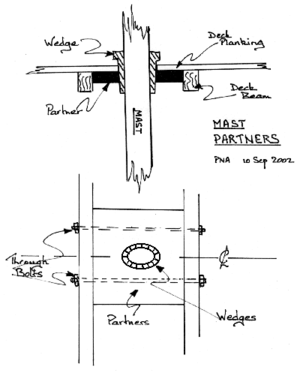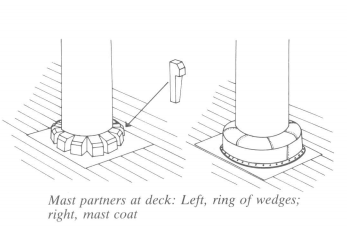I just wanted to give some more details, because I think, that some given information could mislead in fast reading:
A very good way showing the system of forces in a multi-deck sailing vessel is a longitudinal section (here the 74-gun ship by Jean Boudriot)
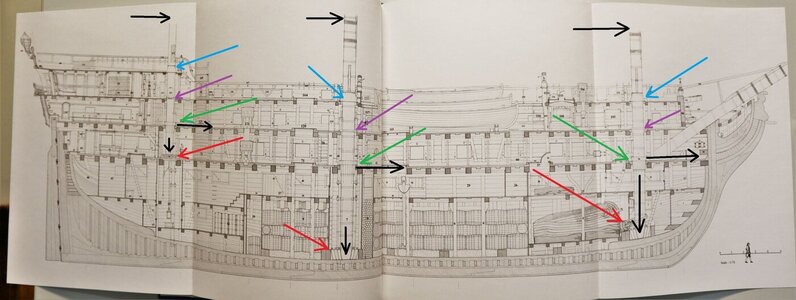
you can see the three masts
first of all the own wheight of the masts, spars and sails are vertical down via the mast foot towards the keel
The wind forces (shown with black arrows at the mast "heads") are transported via the mast downwards and transfered only to one deck, usually the Main deck which is constructed stronger (cross section of deck beams etc.)
With red arrows I marked the mast foots
with green arrows the only fixed connection of the mast with the beams of the ship (via wedges and partners)
with blue arrows you can see the the covering the gap between the mast and deck with some canvas (you mentione collars)
with purple arrows are marked the decks, where we have partners, but no wedges -> so here the mast has no connection / contact with the partners or beams or planking -> the gap is usually covered with a wooden ring with inner diameter like the outer diameter of the mast - but the mast can, due to his small deflections move in all directions
=> what I wanted to describe is the fact, that the usual mast has only two fix connections with the ship:
One at the mast foot and
the second at the one deck where the wooden wedges are placed
Here in addition a small excerpt also from Boudriot showing the partners (this is french style) on the several decks
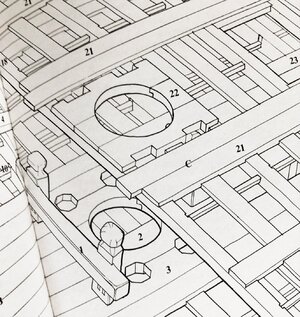
and here a excerpt from the Bonhomme Richard showing the deck where the mast is fixed with wooden wedges against the partners and beams
the other upper deck shows the ring covering the clearly visible gap between mast and partner
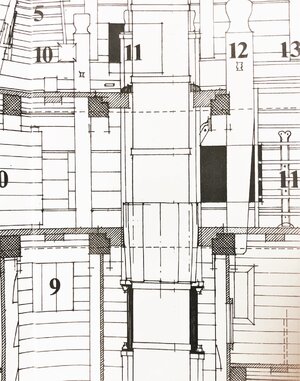
So wooden wedges are used only on one deck !!
Against water (and protecting injuries of seaman-feets) the gap was protected by canvas (sometimes leather) collar and / or wooden rings





